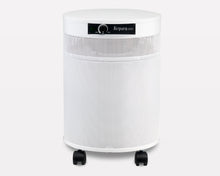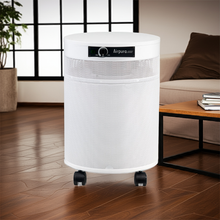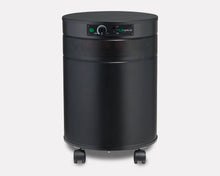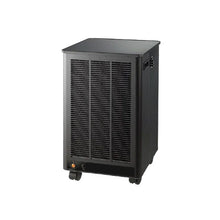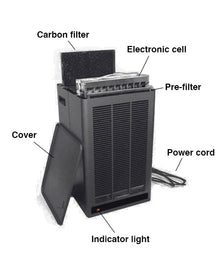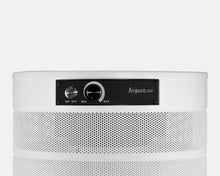The Definitive Guide to Breathing Easy: How Air Purification Transforms Hair and Nail Salons
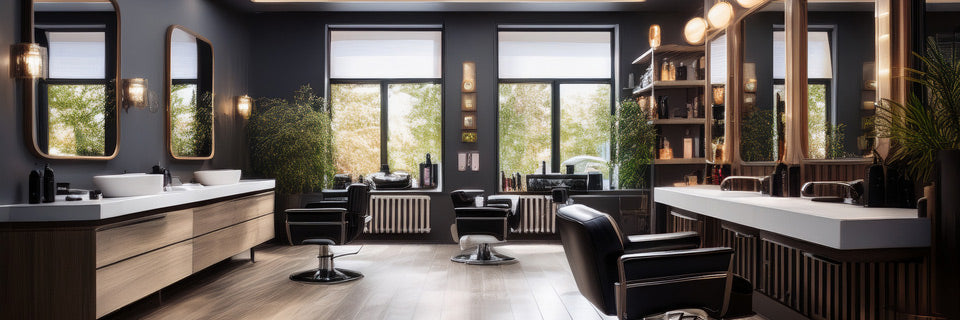
The Unseen Threat: Why Your Salon's Air Quality Demands Attention
Stepping into a hair or nail salon often conjures images of vibrant colors, relaxing aromas, and the buzz of creative energy. Yet, beneath the surface of beauty transformations, an unseen battle is often waged: the fight against poor indoor air quality. For salon owners and their dedicated staff, this isn't just a minor inconvenience; it's a critical health and business concern that can impact everything from employee well-being to client satisfaction and even long-term profitability.
Imagine working eight hours a day, five days a week, surrounded by a constant cocktail of chemical fumes, dust particles, and lingering odors. This isn't a hypothetical scenario for many in the beauty industry. The very products that create stunning hair and nails – from acrylics and polishes to hair sprays and dyes – release volatile organic compounds (VOCs), formaldehyde, and other airborne particulates. Without proper ventilation and air purification, these substances accumulate, turning your salon into a potential hotbed of indoor air pollution. But what if there was a simple, effective solution that could not only protect your team and clients but also elevate your salon's reputation?
Beyond the Glamour: The Hidden Health Risks in Hair and Nail Salons
The unique environment of hair and nail salons, while aesthetically pleasing, often presents a significant challenge to indoor air quality. The very nature of the services offered involves the use of a wide array of chemical products that, while essential for their intended purpose, can release a variety of airborne contaminants. Understanding these specific pollutants and their potential impact is the first step toward creating a healthier and safer salon environment.
Volatile Organic Compounds (VOCs): The Invisible Fumes
One of the most prevalent concerns in salons is the presence of Volatile Organic Compounds (VOCs). These organic chemicals have a high vapor pressure at room temperature, meaning they easily evaporate and enter the air. Common VOCs found in salons include:
- Formaldehyde: Often found in nail polishes, hardeners, and some hair straightening treatments. The National Institute for Occupational Safety and Health (NIOSH) has identified formaldehyde as a potential occupational carcinogen and links it to respiratory issues, skin irritation, and even certain cancers with prolonged exposure. (Source: National Institute for Occupational Safety and Health (NIOSH). Formaldehyde Occupational Hazard. Retrieved from https://www.atlenv.com/formaldehyde-and-other-nasty-chemicals-in-hair-beauty-and-nail-salons).
- Toluene, Dibutyl Phthalate (DBP), and Formaldehyde (the "Toxic Trio"): These chemicals are historically common in many nail products. While some manufacturers have moved away from them, they can still be found. Exposure to these can lead to headaches, dizziness, respiratory problems, and even reproductive issues. The Environmental Working Group (EWG) has highlighted concerns about these chemicals, noting that some "non-toxic" labeled polishes have been found to contain them. (Source: Environmental Working Group. (2012). Calif. Regulators: “Non-Toxic” Nail Polishes Anything But. Retrieved from https://www.ewg.org/news-insights/news-release/calif-regulators-non-toxic-nail-polishes-anything).
- Acetone and Ethyl Acetate: Commonly used in nail polish removers, these solvents can cause eye, nose, and throat irritation, headaches, and nausea.
Fine Particulate Matter: More Than Just Dust
Beyond chemical fumes, salons also generate significant amounts of fine particulate matter. This includes:
- Nail Dust: During filing and buffing, microscopic nail particles become airborne, irritating the respiratory system and potentially causing allergic reactions.
- Hair Dust and Dander: Cutting and styling hair releases fine strands and skin flakes, which can trigger allergies and asthma in sensitive individuals.
- Chemical Residues: Dried residues from hairsprays, hair dyes, and other styling products can become airborne when disturbed, contributing to poor air quality.
The Cumulative Impact: Why It Matters
The cumulative effect of these airborne pollutants is a serious concern for both salon workers and clients. Chronic exposure can lead to a range of health issues, including:
- Respiratory Problems: Asthma, bronchitis, coughing, and shortness of breath are common complaints among salon professionals. A study published in the International Journal of Occupational Medicine and Environmental Health (2016) found faster health deterioration among nail technicians occupationally exposed to low levels of volatile organic compounds, including1 increased occurrence of respiratory symptoms. (Source: Faster Health Deterioration Among Nail Technicians Occupationally Exposed to Low Levels of Volatile Organic Compounds. International Journal of Occupational Medicine and Environmental Health,2 29(6), 903-911. Retrieved from https://ijomeh.eu/pdf-62888-8435?filename=8435.pdf).
- Skin and Eye Irritation: Direct contact and airborne exposure can cause dermatitis, rashes, and persistent eye irritation.
- Headaches and Dizziness: Exposure to VOCs can lead to neurological symptoms like headaches, fatigue, and difficulty concentrating.
- Allergies and Sensitivities: Regular exposure can lead to the development of new allergies or exacerbate existing ones.
This isn't just about temporary discomfort. For salon owners, these health concerns translate into increased absenteeism, reduced productivity, and potential long-term health complications for their invaluable staff. For clients, poor air quality can diminish their salon experience, leading to dissatisfaction and a reluctance to return.
The Clear Solution: How Air Purification Transforms Your Salon
The good news is that these pervasive air quality issues are not insurmountable. Implementing a robust air purification system in your hair or nail salon can dramatically mitigate the risks and create a noticeably healthier and more pleasant environment for everyone. But how exactly does it work, and what makes it such an effective solution?
Targeting the Specific Pollutants of Salons
Unlike general air filters, advanced air purifiers are designed to tackle the unique cocktail of pollutants found in salons. Here's how they address the specific challenges:
-
HEPA Filters: The Particulate Powerhouse: High-Efficiency Particulate Air (HEPA) filters are the cornerstone of effective air purification for salons. These dense, pleated filters are engineered to capture at least 99.97% of airborne particles as small as 0.3 microns. This means they are highly effective at trapping:
- Nail dust and hair dust: Preventing these fine particles from circulating and settling on surfaces or being inhaled.
- Pollen, pet dander, and mold spores: Common allergens that can also contribute to indoor air quality issues.
- Other microscopic airborne irritants: Ensuring a significantly cleaner air stream.
-
Activated Carbon Filters: The Chemical Conqueror: While HEPA filters excel at capturing particulates, they are less effective against gaseous pollutants like VOCs. This is where activated carbon filters come in. Activated carbon is a highly porous material with millions of tiny pores that provide a vast surface area. When air passes through, VOCs, chemical fumes, and unpleasant odors are adsorbed onto the carbon's surface. This is critical for salons to remove:
- Formaldehyde, toluene, acetone, and other solvent fumes: Significantly reducing the chemical burden in the air.
- Odors from hair dyes, perms, and nail products: Creating a fresher, more inviting atmosphere.
- General "salon smell": Enhancing the overall client experience.
-
Other Filtration Technologies (Optional but Beneficial): Some advanced air purifiers may also incorporate additional technologies:
- UV-C Light: Can help neutralize airborne bacteria, viruses, and mold spores, adding an extra layer of sanitization, particularly relevant in environments where clients are in close proximity.
- Pre-filters: Extend the life of HEPA and carbon filters by capturing larger particles like hair and dust, making maintenance easier.
Beyond Filtration: The Science of Air Circulation
An effective air purification system doesn't just filter air; it actively circulates and cleans it. High Clean Air Delivery Rate (CADR) is a crucial metric, indicating how quickly an air purifier can clean a room of a specific size. For salons, choosing a unit with a high CADR ensures that the air is continuously turned over and purified, even in busy periods. The science is simple: the more frequently the air passes through the purification system, the fewer contaminants remain suspended, leading to a consistently healthier breathing environment.
Real-World Impact: Case Studies and Expert Insights
The benefits of air purification in salons aren't just theoretical; they are tangible and measurable.
- Improved Employee Health & Retention: Salon owners who have invested in air purification often report a noticeable decrease in respiratory complaints, headaches, and general fatigue among their staff. This directly translates to fewer sick days, higher morale, and improved employee retention – a significant competitive advantage in an industry known for high turnover. When employees feel valued and protected, their dedication and productivity naturally increase.
- Enhanced Client Experience & Loyalty: Imagine a client walking into your salon and instead of being hit with a strong chemical smell, they are greeted by a fresh, clean atmosphere. This immediately sets a positive tone. Clients are more likely to relax, enjoy their service, and most importantly, return. Many salons have even used their commitment to air quality as a unique selling proposition, attracting environmentally conscious clients.
- Compliance and Peace of Mind: While regulations specifically on indoor air quality in salons can vary by region, proactive measures like air purification demonstrate a commitment to health and safety. This can help salons meet or exceed general workplace safety standards and provide peace of mind to both owners and staff. The EPA consistently emphasizes the importance of improving indoor air quality for public health and offers guidance on strategies like filtration. (Source: U.S. Environmental Protection Agency. (2025). Indoor Air Quality. Retrieved from https://www.epa.gov/air-quality/indoor-air-quality).
Our Experience: Seeing the Difference First-Hand
We've worked with numerous salon owners who, initially skeptical, have become staunch advocates for air purification. One owner, Sarah, a nail salon proprietor for over 15 years, shared her experience: "My technicians used to complain about persistent headaches and dry coughs. After installing a commercial-grade air purifier, within weeks, they noticed a significant difference. The air felt lighter, the chemical smell was gone, and their health complaints virtually disappeared. It's been a game-changer for my business and my team's well-being." This kind of direct, lived experience underscores the transformative power of clean air.
Practical Steps: Choosing and Implementing the Right Air Purification Solution
Now that the "why" is clear, let's delve into the "how." Implementing an effective air purification strategy for your salon involves a few key considerations to ensure you choose the right system and maximize its benefits.
Assessing Your Salon's Needs:
Every salon is unique, and the ideal air purification solution will depend on several factors:
- Salon Size and Layout: Larger, open-plan salons will require higher CADR units or multiple units to effectively circulate and clean the air. Consider the number of styling stations, nail stations, and general square footage.
- Types of Services Offered: Salons that heavily use acrylics, gel extensions, or strong hair treatments will generate more VOCs and particulate matter, necessitating more robust activated carbon filtration and higher airflow.
- Ventilation Systems: While air purifiers are powerful, they are not a substitute for proper ventilation. Ensure your salon's HVAC system is well-maintained and that fresh air is regularly introduced. Air purifiers work in conjunction with ventilation to optimize air quality.
- Budget: Air purifiers range in price, from compact, personal units to large, commercial-grade systems. Balance your budget with the level of purification needed for your specific environment.
Key Features to Look For in Salon Air Purifiers:
When selecting an air purifier for your salon, prioritize models with the following features:
- True HEPA Filter: Essential for capturing dust, dander, nail filings, and other particulates. Ensure it specifies "True HEPA" for guaranteed 99.97% capture efficiency.
- High-Capacity Activated Carbon Filter: Crucial for adsorbing chemical fumes and odors. Look for models with a substantial amount of activated carbon (measured in pounds or grams) for long-lasting effectiveness.
- High CADR (Clean Air Delivery Rate): This metric indicates how quickly the purifier cleans a room. Match the CADR to your salon's square footage. Many manufacturers provide recommended room sizes for their units.
- Quiet Operation: Salons are places of relaxation and conversation. Choose a purifier that operates quietly, especially on lower fan settings, to avoid disrupting the ambiance.
- Durability and Commercial-Grade Construction: Salon environments can be demanding. Invest in a robust unit designed for continuous operation.
- Filter Replacement Indicators and Easy Maintenance: Clear indicators for when filters need changing and straightforward replacement processes will ensure consistent performance.
Strategic Placement for Maximum Impact:
The effectiveness of your air purifier is heavily influenced by its placement.
- Near Sources of Pollution: Ideally, place units close to nail stations, chemical mixing areas, or hair washing stations where the most significant concentrations of pollutants are generated.
- Optimize Airflow: Position purifiers where they can draw in dirty air and release clean air efficiently. Avoid placing them in corners where airflow might be restricted.
- Consider Multiple Units: For larger salons or those with distinct service areas (e.g., separate hair and nail sections), multiple smaller units strategically placed may be more effective than one large central unit.
Maintenance: The Key to Continued Performance:
Air purifiers are an investment, and like any equipment, they require regular maintenance to perform optimally.
- Regular Filter Changes: HEPA and activated carbon filters have a finite lifespan. Adhere to the manufacturer's recommended replacement schedule (typically every 6-12 months for HEPA, more frequently for carbon depending on usage). Ignoring filter changes will significantly reduce the purifier's effectiveness.
- Pre-filter Cleaning: If your unit has a washable pre-filter, clean it regularly to prevent larger debris from clogging the main filters.
- Regular Cleaning of the Unit: Wipe down the exterior of the unit to prevent dust buildup on vents.
By taking these practical steps, salon owners can not only mitigate the immediate health risks associated with poor indoor air quality but also proactively create a superior environment that benefits staff well-being, enhances client satisfaction, and ultimately, strengthens their business's reputation and success.
Conclusion: Elevating Your Salon, One Breath at a Time
The beauty industry is about transformation – helping individuals look and feel their best. It's time to extend that transformation to the very air within your salon. The evidence is clear: the air quality in hair and nail salons poses tangible health risks to both dedicated professionals and valued clients. From the lingering presence of VOCs to fine particulate matter, these unseen pollutants can lead to a host of uncomfortable symptoms and long-term health concerns.
However, the solution is equally clear and incredibly effective. Investing in a high-quality air purification system equipped with true HEPA and activated carbon filters is not just an expense; it's an investment in the health, happiness, and continued success of your salon. It's an investment in your staff, who spend countless hours creating beauty, and in your clients, who seek a relaxing and rejuvenating escape.
By taking proactive steps to improve your indoor air quality, you're not only creating a safer and healthier environment but also demonstrating a profound commitment to well-being that will resonate deeply with your team and your clientele. Imagine a salon where the air is as fresh and clean as the vibrant new looks you create. This isn't just a dream; it's an achievable reality. By embracing the power of air purification, you can elevate your salon experience, build unwavering trust, and ensure your business thrives, one clean breath at a time.
Frequently Asked Questions (FAQ)
Q1: Is an air purifier enough, or do I still need good ventilation?
A1: Air purifiers are highly effective, but they complement, rather than replace, good ventilation. Proper ventilation brings in fresh outdoor air, while air purifiers actively clean and filter the indoor air. Both are crucial for optimal air quality in a salon setting.
Q2: How often do I need to change the filters?
A2: Filter replacement schedules vary by manufacturer and usage. Generally, HEPA filters last 6-12 months, while activated carbon filters may need replacing more frequently (every 3-6 months) depending on the concentration of chemicals and odors in your salon. Always refer to your air purifier's manual for specific recommendations.
Q3: Can a regular home air purifier work in a salon?
A3: While some small salons might see a minor benefit from a powerful home air purifier, most professional salons require commercial-grade units with higher CADR ratings and larger, more robust activated carbon filters to effectively handle the specific and higher concentrations of pollutants found in these environments.
Q4: Do air purifiers remove all chemical smells?
A4: High-quality air purifiers with robust activated carbon filters are very effective at adsorbing a wide range of chemical fumes and odors. While they can significantly reduce and often eliminate most noticeable chemical smells, extremely strong or poorly ventilated sources may still have a residual scent. The goal is to reduce exposure to harmful levels.
Q5: What certifications should I look for in an air purifier?
A5: Look for certifications like AHAM Verifide (for CADR ratings), Energy Star (for energy efficiency), and CARB (California Air Resources Board) certification, which ensures the device does not produce harmful levels of ozone.
Q6: Will an air purifier affect my salon's electricity bill?
A6: Modern air purifiers are designed to be energy-efficient. Look for Energy Star certified models. While there will be a minor increase in electricity consumption, the benefits of improved air quality, employee health, and client satisfaction often far outweigh this cost.
Sources
- National Institute for Occupational Safety and Health (NIOSH). (2020). Formaldehyde and Other Nasty Chemicals in Hair/Beauty and Nail Salons. Retrieved from https://www.atlenv.com/formaldehyde-and-other-nasty-chemicals-in-hair-beauty-and-nail-salons.
- Faster Health Deterioration Among Nail Technicians Occupationally Exposed to Low Levels of Volatile Organic Compounds. (2016). International Journal of Occupational Medicine and Environmental Health, 29(6), 903-911. Retrieved from https://ijomeh.eu/pdf-62888-8435?filename=8435.pdf.
- U.S. Environmental Protection Agency. (2025). Indoor Air Quality. Retrieved from https://www.epa.gov/air-quality/indoor-air-quality.
- Environmental Working Group. (2012). Calif. Regulators: “Non-Toxic” Nail Polishes Anything But. Retrieved from https://www.ewg.org/news-insights/news-release/calif-regulators-non-toxic-nail-polishes-anything.

